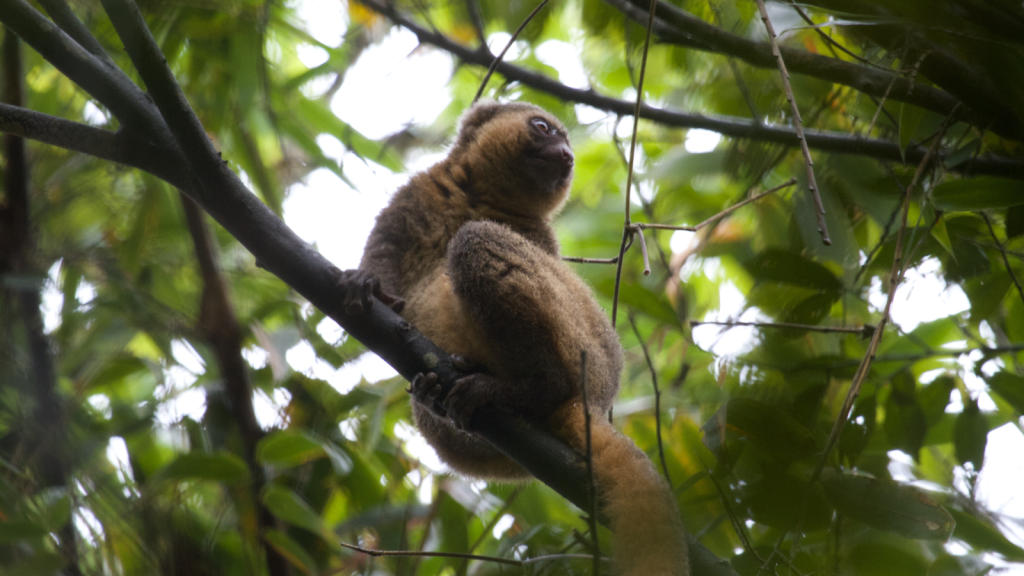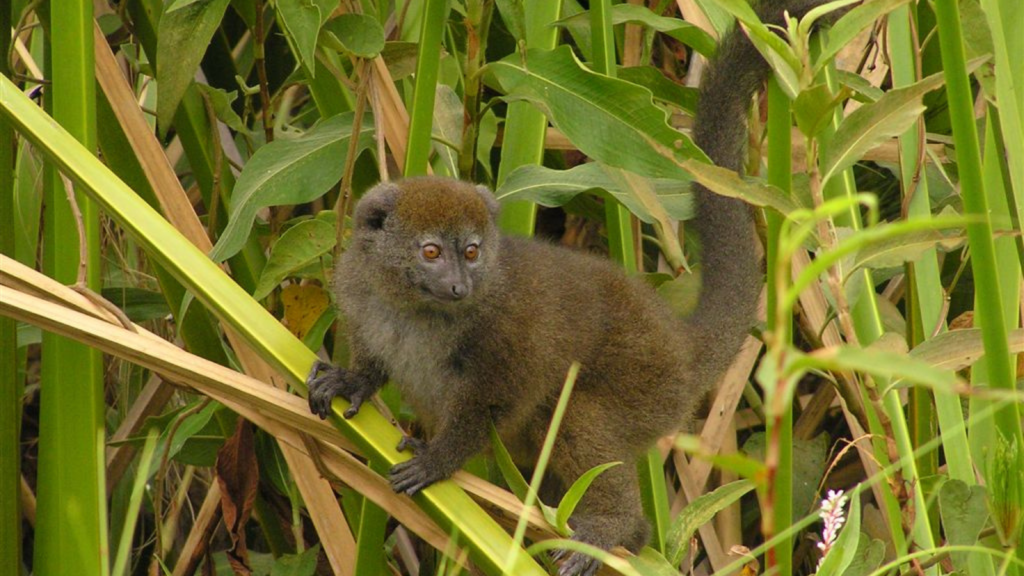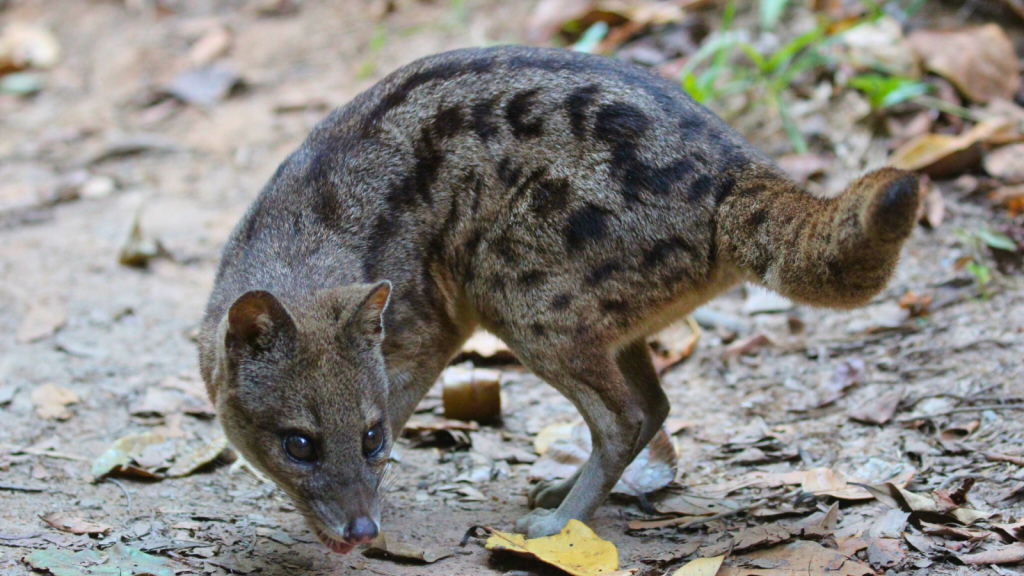Madagascar, often called the “Eighth Continent,” is a treasure trove of unique wildlife. This island off the coast of Africa has been isolated for millions of years, allowing its animals to evolve in fascinating ways. Among these creatures, mammals stand out for their incredible adaptations and peculiar appearances. From tiny mice to cat-like hunters, Madagascar’s mammals are unlike anything you’ll find elsewhere on Earth. Here’s a look at 15 of the most remarkable mammals that call this island home, each with its own extraordinary story of survival and adaptation.
Aye-Aye

The aye-aye looks like nature had a bit of fun while creating it. With its oversized ears, rodent-like teeth, and a long, bony middle finger, this lemur is truly one of a kind. Aye-ayes use their strange finger to tap on trees, listening for hollow spots that might hide grubs. Then, they gnaw a hole and fish out their meal with that same finger. Interestingly, the aye-aye’s middle finger has a ball-and-socket joint, allowing it to rotate a full 360 degrees.
Fossa

As Madagascar’s largest native predator, the fossa is a fearsome hunter. It looks like a mix between a cat and a mongoose, with a long tail for balance. Fossas are agile climbers, chasing lemurs through the treetops with impressive speed and agility. Despite their cat-like appearance, they’re actually more closely related to mongooses. Female fossas exhibit a unique trait called transient masculinization, where they temporarily develop male-like features as juveniles.
Tenrec

Tenrecs are small, spiny mammals that look a bit like hedgehogs. However, they’re not related to hedgehogs at all – they’re a unique family of animals found only on Madagascar and nearby islands. There are over 30 species of tenrec, ranging from tiny shrew-like creatures to ones that look like otters. Some can even roll into a ball for protection, just like hedgehogs. The lowland streaked tenrec is the only known mammal to use stridulation, a method of sound production usually found in insects.
Indri

The indri is the largest living lemur, known for its distinctive black and white fur. What really sets it apart, though, is its haunting song. Indris sing loud, wailing calls that can be heard for miles through the forest. These songs help indri groups mark their territory and communicate with each other. Indris are also the only lemurs that don’t have a tail, relying instead on powerful legs for leaping between trees.
Cowan’s Shrew Tenrec

This tiny mammal is one of the smallest in the world, weighing just 5-8 grams. It looks like a shrew but is actually a type of tenrec. Cowan’s shrew tenrecs have poor eyesight but make up for it with an excellent sense of smell and hearing. They spend most of their time burrowing through leaf litter, hunting for insects and worms. These tenrecs can enter a state of torpor to conserve energy during times of food scarcity.
Giant Jumping Rat

Despite its name, the giant jumping rat isn’t actually a rat at all. It’s a unique rodent found only in Madagascar’s dry forests. These animals have powerful back legs that allow them to hop like tiny kangaroos. Giant jumping rats are also known for their intricate burrow systems, which they dig using their large front teeth. They’re monogamous and form lifelong pairs, which is unusual among rodents.
Lowland Streaked Tenrec

This small tenrec stands out with its striking yellow and black stripes. It’s the only mammal known to use stridulation – rubbing body parts together to make sound – just like crickets do. The lowland streaked tenrec rubs specialised quills together to produce a high-pitched sound when threatened. These tenrecs are also capable of lowering their body temperature to match their surroundings, a trait known as heterothermy.
Golden Bamboo Lemur

The golden bamboo lemur wasn’t discovered until 1986, making it one of the more recent additions to Madagascar’s mammal list. As its name suggests, this lemur has a beautiful golden-orange coat. It’s also one of the few mammals that can eat bamboo, which contains cyanide that would be toxic to most other animals. These lemurs can consume up to 12 times the amount of cyanide that would be lethal to other mammals of similar size.
Alaotran Gentle Lemur

Also known as the bamboo lemur, this is the only primate that lives exclusively in wetlands. It’s perfectly adapted to life among the reeds, with strong hands for gripping and the ability to swim if needed. Sadly, the Alaotran gentle lemur is critically endangered due to habitat loss. These lemurs have a unique social structure, living in small family groups led by a dominant female.
Madagascan Flying Fox

This large bat is one of the biggest in the world, with a wingspan of up to 1.5 metres. Despite its name, it can’t actually fly like a fox – it’s a type of fruit bat. Madagascan flying foxes play a crucial role in their ecosystem by spreading seeds from the fruits they eat, helping to regrow forests. They have excellent eyesight and can see in colour, unlike many other bat species.
Red-Fronted Brown Lemur

This lemur gets its name from the reddish-brown patch on its forehead. Unlike many other lemur species, red-fronted brown lemurs don’t show any differences in colour between males and females. They’re known for their complex social structures, living in groups of up to 12 individuals. These lemurs are cathemeral, meaning they’re active during both day and night, a rare trait among primates.
Fanaloka

Also known as the striped civet, the fanaloka is a small carnivorous mammal. It has distinctive stripes running down its back and a long, bushy tail. Fanalokas are mostly active at night, hunting for small animals and insects. They’re one of the few native carnivores on Madagascar besides the fossa. Fanalokas have scent glands that produce a musky odour, which they use to mark their territory.
Flat-Tailed Tortoise Rat

This unusual rodent has a wide, flat tail that looks a bit like a canoe paddle. It uses this tail for balance as it climbs through trees and shrubs. The flat-tailed tortoise rat is nocturnal and has large eyes to help it see in the dark. It gets its name from its habit of pulling its head into its shoulders when threatened, similar to a tortoise. These rats are excellent climbers and can even hang upside down from branches using their strong claws.
Greater Hedgehog Tenrec

Despite its name and appearance, this animal isn’t related to hedgehogs at all. It’s another unique type of tenrec, covered in spines for protection. When threatened, the greater hedgehog tenrec can roll into a ball, just like a hedgehog. It also has a long, sensitive nose that it uses to sniff out insects and other small prey. These tenrecs can hibernate for up to 10 months of the year, the longest known hibernation period of any animal.
Lac Alaotra Bamboo Lemur

This small lemur is found only around Lake Alaotra in eastern Madagascar. It’s specially adapted to life in the dense reed beds around the lake, with strong hands for climbing and gripping. The Lac Alaotra bamboo lemur is one of the most endangered primates in the world, with only about 1,000 individuals left in the wild. Unlike other bamboo lemurs, this species has adapted to feed on papyrus and reeds rather than bamboo.
15 Animals That Eat Hornets

Nature never fails to amaze me. Who would’ve thought so many creatures would prey on hornets? Their painful stings and fierce and aggressive behaviour make them seem like a pretty unappetizing meal to me. While hornets might seem like formidable insects that few creatures would dare to tangle with, they actually have quite a few natural enemies. From nimble birds to crafty mammals, plenty of other creatures make meals out of these stinging insects.
Read More: 15 Animals That Eat Hornets
Meet the Wolf Spider | One of Britain’s Biggest Spiders

Wolf spiders are a remarkable group of arachnids found across the UK and around the world. These agile hunters get their name from their wolf-like hunting style, actively chasing down prey rather than spinning webs. With their large eyes and hairy bodies, wolf spiders might look intimidating, but they’re actually quite beneficial to gardens and homes. These spiders help control pest populations and are generally harmless to humans. From their unique parenting techniques to their impressive hunting skills, wolf spiders are full of surprises.
Read More: Meet the Wolf Spider | One of Britain’s Biggest Spiders



